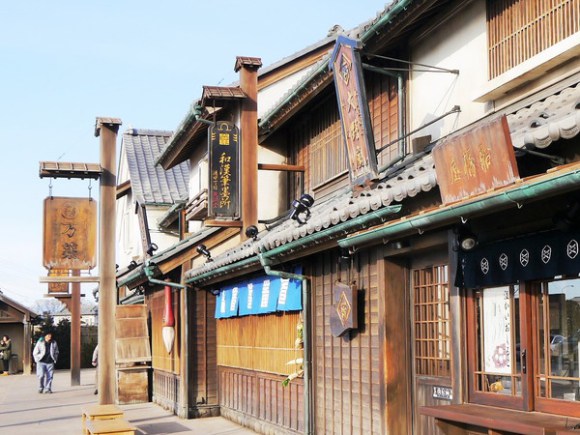
Growing up in Southern California, I was no stranger to long road trips, whether up the coast to visit relatives, or out to Las Vegas to visit the craps tables. Along the way I’d pass many freeway rest areas, with amenities whose quality ranged from “a good place to use the bathroom as long as you cover your nose” to “a good place to use the bathroom, as long as you have a friend with you to make sure you don’t get shanked by a hobo.”
So imagine my surprise when I moved to Japan to find that its highway rest stops (called “parking areas” by Japanese motorists) are spotless. Plus, they’re often great spots to munch on regional specialties or pick up local souvenirs. And if you happen to visit one particular parking area, you can even go back in time.
This special rest stop is located in Hanyu City in Saitama Prefecture, Tokyo’s neighbor to the north. The Hanyu parking area, situated along the Tohoku Expressway that connects the capital with the northernmost prefectures of Japan’s main island of Honshu, recently underwent renovations and had its grand re-opening last month. But rather than just slapping a new coat of paint on the old buildings, the rest stop’s planners decided to do something unique.
During the time known as the Edo Period, Japan was ruled by a feudal government. During this era, which lasted from 1603 to 1867, the government kept close watch on the movement of people from one region of the country to the next, establishing a system of checkpoints along the system of roads leading to the city of Edo, as Tokyo was then called. One such outpost, the Kurihashi Checkpoint, was set up near to where the Hanyu parking area is today. Inspired by this, those in charge of the rest stop’s renovations set about recreating an Edo Period townscape.
Adding a dash of literary appeal, the newly overhauled parking area has been rechristened the Onihei Edo-dokoro, with Onihei being a reference to the lead character created by the late author Shotaro Ikenami. Ikegami’s Onihei Hankacho franchise contains 24 volumes chronicling Edo Period law enforcement officer Onihei as he protects his town from thieves, arsonists, and other unsavory types. In addition to the books, which were published over a span of 23 years, Onihei Hankacho has also seen movie, TV, stage, and manga comic adaptations.
Arriving at the rest stop, only the lack of cameras and abundance of modern cars keep you from thinking you haven’t wandered onto a movie set. Everywhere you look, you can see the feature of an Edo Period town, complete with traditional tiled roofs, a fire watch tower, wooden signposts, and hanging lanterns.
There’s one more characteristic that defines the hero of Ikegami’s series of books. Aside from his strong sense of justice, Onihei is a man who loves a good meal, so of course the Onihei Edo-dokoro needs a few places to eat historically-inspired fare. We grabbed a seat for lunch at Gotestu, a restaurant inside the rest area specializing in shamo, a type of chicken especially popular during the Edo Period.
We sampled two dishes, starting with shamo ippon udon, which is mentioned in Ikegami’s novels. Consisting of a single gigantic udon noodle (“ippon” does indicate “one noodle,” after all) with morsel of shamo served on the side, the dish’s sweet broth, similar to that used in sukiyaki, helped draw out the wheat flavors of the firm noodle.
Not nearly as dramatic looking, yet no less delicious, was the Gotetsu shamo hotpot set, which makes use of the same sweet broth and tasty poultry.
And of course, since a true gourmand like Onihei wouldn’t pass up dessert, the rest stop also has a place to indulge your sweet tooth in the confectionary shop Funabashiya. Funabashiya opened its original location in 1805, and, like Gotetsu, the Onihei Edo-dokoro branch is its first in an expressway rest area.
As you’d expect from a candy maker with such a long history, Funabashiya sells treats that have been popular since the Edo Period, such as the sweet sticky rice cakes kuzu mochi, which can be eaten either with a wooden utensil or straight from a skewer.
▼ Kuzu mochi in sweet red bean, sweet potato, and green tea varieties
Entertained and full, it was time to head home. We should point out that the Onihei Edo-dokoro is located on the southbound route of the Tohoku Expressway. In other words, if you’re starting from Tokyo you’ll need to first drive north, then loop back around in order to get there. Still, it’s definitely worth making the trip. After all, how can you say no to the rare opportunity of traveling through time using your car?
▼ Especially when Japan builds more entertaining cars than the DeLorean
Related: Onihei Edo-dokoro website
Photos: Rocketnews24

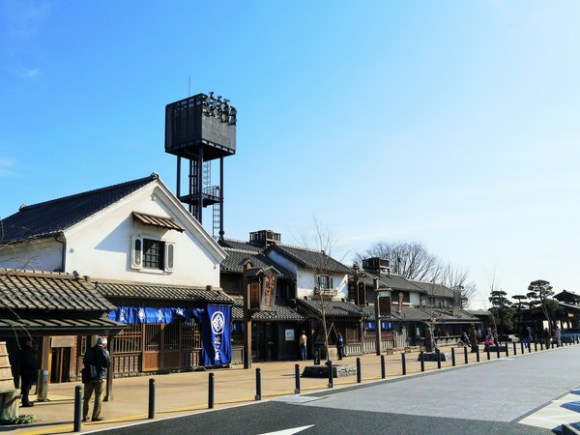
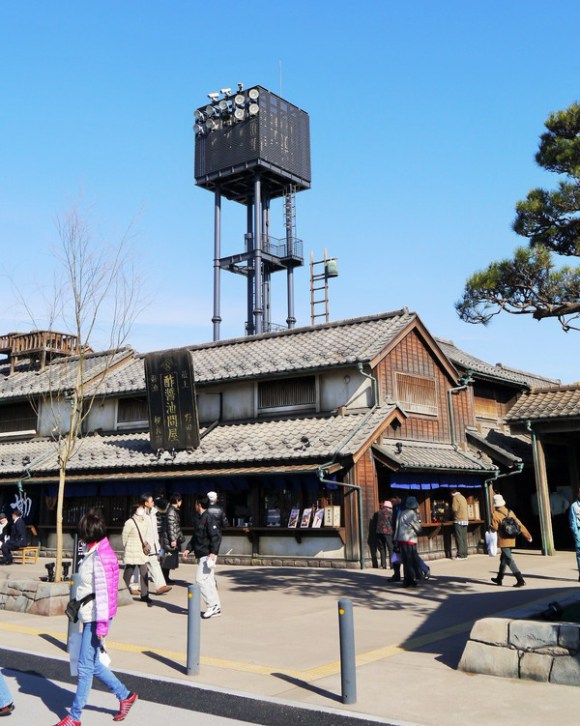
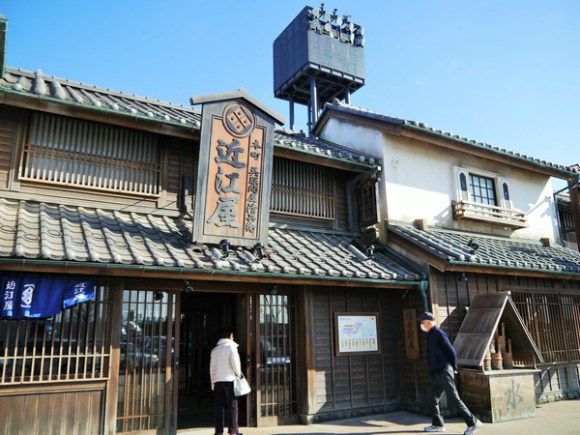
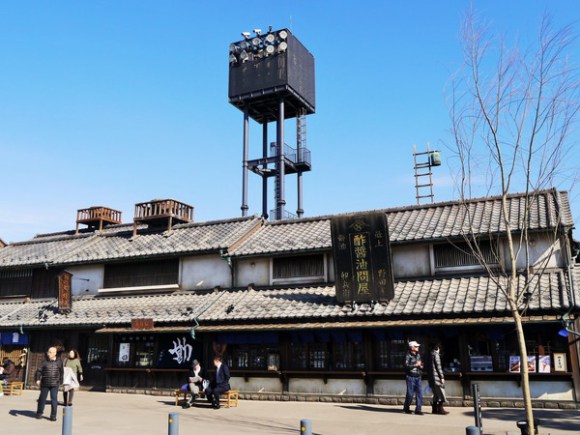
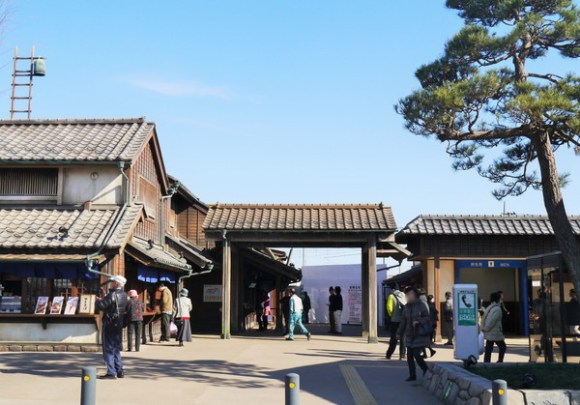
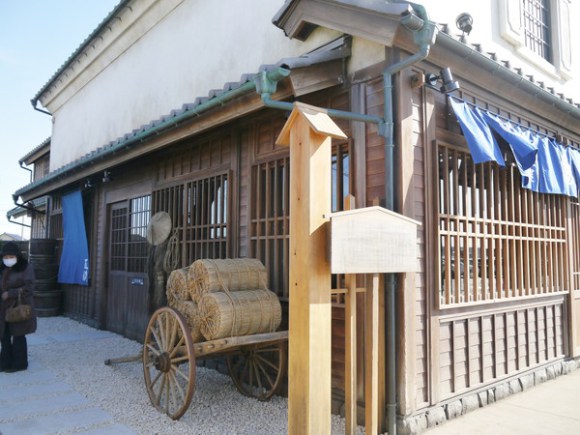
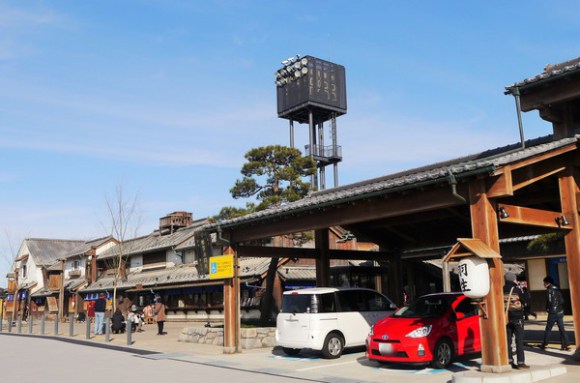
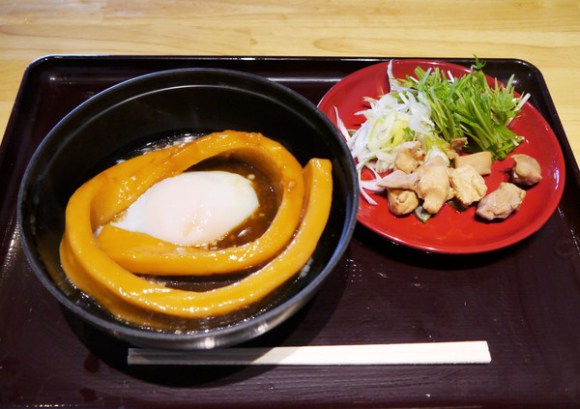
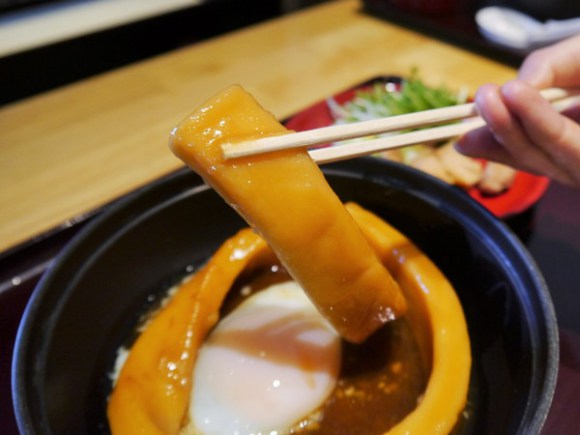
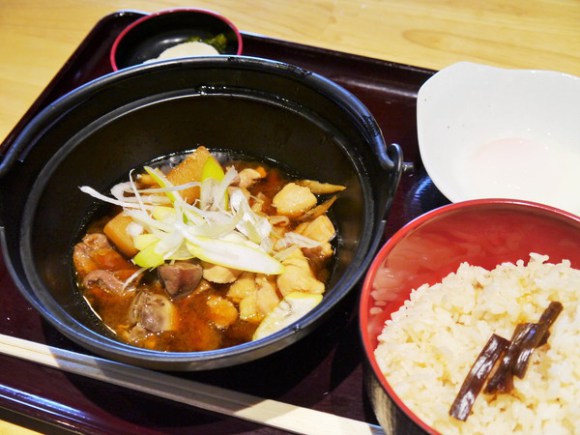
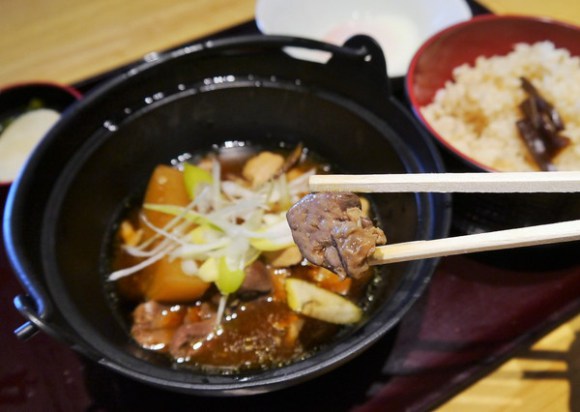
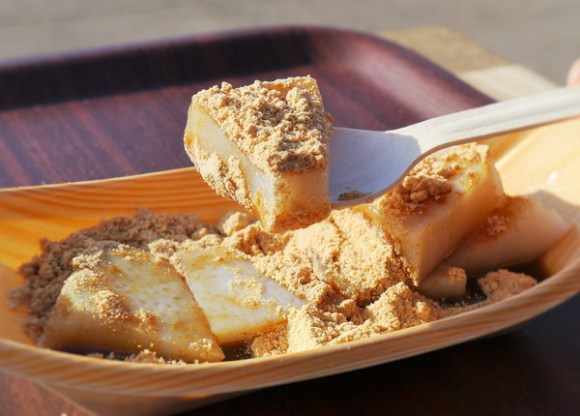
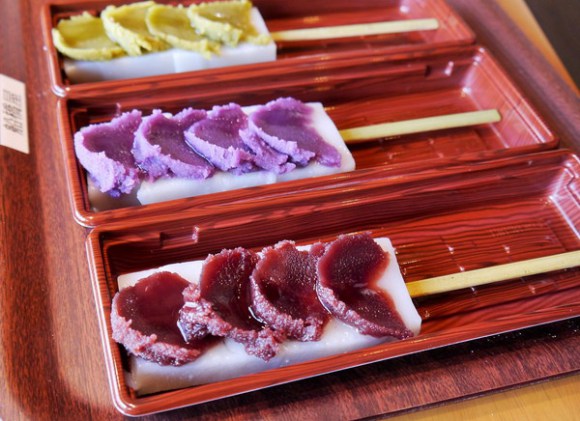
 Small Hokkaido bookshop’s unique service is getting business from all over Japan
Small Hokkaido bookshop’s unique service is getting business from all over Japan Tokyo Banana Curry adds capital’s souvenir sweet’s sweetness to roux, but not in Tokyo
Tokyo Banana Curry adds capital’s souvenir sweet’s sweetness to roux, but not in Tokyo Open stall indicators, fresh flowers, and the superb cleanliness of a Japanese highway restroom
Open stall indicators, fresh flowers, and the superb cleanliness of a Japanese highway restroom Miniature Japanese ramen cakes are a rare, locally guarded secret
Miniature Japanese ramen cakes are a rare, locally guarded secret Champion figure skater Yuzuru Hanyu to make on-screen acting debut as samurai lord!
Champion figure skater Yuzuru Hanyu to make on-screen acting debut as samurai lord! Tokyo Tsukiji fish market site to be redeveloped with 50,000-seat stadium, hotel, shopping center
Tokyo Tsukiji fish market site to be redeveloped with 50,000-seat stadium, hotel, shopping center Red light district sushi restaurant in Tokyo shows us just how wrong we were about it
Red light district sushi restaurant in Tokyo shows us just how wrong we were about it McDonald’s new Happy Meals offer up cute and practical Sanrio lifestyle goods
McDonald’s new Happy Meals offer up cute and practical Sanrio lifestyle goods Starbucks Japan adds a Motto Frappuccino to the menu for a limited time
Starbucks Japan adds a Motto Frappuccino to the menu for a limited time Sandwiches fit for a sumo served up in Osaka【Taste Test】
Sandwiches fit for a sumo served up in Osaka【Taste Test】 Anime girl English teacher Ellen-sensei becomes VTuber/VVTUber and NFT
Anime girl English teacher Ellen-sensei becomes VTuber/VVTUber and NFT New private rooms on Tokaido Shinkansen change the way we travel from Tokyo to Kyoto
New private rooms on Tokaido Shinkansen change the way we travel from Tokyo to Kyoto Sakura tree falls on man at Sannenzaka near Kiyomizu temple in Kyoto 【Breaking News】
Sakura tree falls on man at Sannenzaka near Kiyomizu temple in Kyoto 【Breaking News】 Beautiful Red and Blue Star luxury trains set to be Japan’s new Hokkaido travel stars
Beautiful Red and Blue Star luxury trains set to be Japan’s new Hokkaido travel stars Full-size Evangelion statue appears at Japanese theme park with entry plug synchronization tests
Full-size Evangelion statue appears at Japanese theme park with entry plug synchronization tests All-you-can-drink Starbucks and amazing views part of Tokyo’s new 170 meter-high sky lounge
All-you-can-drink Starbucks and amazing views part of Tokyo’s new 170 meter-high sky lounge More foreign tourists than ever before in history visited Japan last month
More foreign tourists than ever before in history visited Japan last month Japanese ramen restaurants under pressure from new yen banknotes
Japanese ramen restaurants under pressure from new yen banknotes French Fries Bread in Tokyo’s Shibuya becomes a hit on social media
French Fries Bread in Tokyo’s Shibuya becomes a hit on social media Studio Ghibli releases new action figures featuring Nausicaä of the Valley of the Wind characters
Studio Ghibli releases new action figures featuring Nausicaä of the Valley of the Wind characters Starbucks reopens at Shibuya Scramble Crossing with new look and design concept
Starbucks reopens at Shibuya Scramble Crossing with new look and design concept Studio Ghibli glasses cases let anime characters keep an eye on your spectacles
Studio Ghibli glasses cases let anime characters keep an eye on your spectacles Beautiful Ghibli sealing wax kits let you create accessories and elegant letter decorations【Pics】
Beautiful Ghibli sealing wax kits let you create accessories and elegant letter decorations【Pics】 Studio Ghibli releases Kiki’s Delivery Service chocolate cake pouches in Japan
Studio Ghibli releases Kiki’s Delivery Service chocolate cake pouches in Japan New definition of “Japanese whiskey” goes into effect to prevent fakes from fooling overseas buyers
New definition of “Japanese whiskey” goes into effect to prevent fakes from fooling overseas buyers Our Japanese reporter visits Costco in the U.S., finds super American and very Japanese things
Our Japanese reporter visits Costco in the U.S., finds super American and very Japanese things Studio Ghibli unveils Mother’s Day gift set that captures the love in My Neighbour Totoro
Studio Ghibli unveils Mother’s Day gift set that captures the love in My Neighbour Totoro New Japanese KitKat flavour stars Sanrio characters, including Hello Kitty
New Japanese KitKat flavour stars Sanrio characters, including Hello Kitty New Pokémon cakes let you eat your way through Pikachu and all the Eevee evolutions
New Pokémon cakes let you eat your way through Pikachu and all the Eevee evolutions Disney princesses get official manga makeovers for Manga Princess Cafe opening in Tokyo
Disney princesses get official manga makeovers for Manga Princess Cafe opening in Tokyo Sales of Japan’s most convenient train ticket/shopping payment cards suspended indefinitely
Sales of Japan’s most convenient train ticket/shopping payment cards suspended indefinitely Sold-out Studio Ghibli desktop humidifiers are back so Totoro can help you through the dry season
Sold-out Studio Ghibli desktop humidifiers are back so Totoro can help you through the dry season Japanese government to make first change to romanization spelling rules since the 1950s
Japanese government to make first change to romanization spelling rules since the 1950s Ghibli founders Toshio Suzuki and Hayao Miyazaki contribute to Japanese whisky Totoro label design
Ghibli founders Toshio Suzuki and Hayao Miyazaki contribute to Japanese whisky Totoro label design Doraemon found buried at sea as scene from 1993 anime becomes real life【Photos】
Doraemon found buried at sea as scene from 1993 anime becomes real life【Photos】 Tokyo’s most famous Starbucks is closed
Tokyo’s most famous Starbucks is closed One Piece characters’ nationalities revealed, but fans have mixed opinions
One Piece characters’ nationalities revealed, but fans have mixed opinions We asked a Uniqlo employee what four things we should buy and their suggestions didn’t disappoint
We asked a Uniqlo employee what four things we should buy and their suggestions didn’t disappoint Princesses, fruits, and blacksmiths: Study reveals the 30 most unusual family names in Japan
Princesses, fruits, and blacksmiths: Study reveals the 30 most unusual family names in Japan Don’t miss this captivating video of translucent kuzu confection being made 【Video】
Don’t miss this captivating video of translucent kuzu confection being made 【Video】 This bath bomb looks and feels like an Edo gold bar, is great for gifts or bathing like a shogun
This bath bomb looks and feels like an Edo gold bar, is great for gifts or bathing like a shogun Service area in Shizuoka goes all out for the biggest and baddest Evangelion collaboration ever
Service area in Shizuoka goes all out for the biggest and baddest Evangelion collaboration ever Beef bowl ramen! Japan’s number-two gyudon chain gives us incentive to skip trains when traveling
Beef bowl ramen! Japan’s number-two gyudon chain gives us incentive to skip trains when traveling Japanese toilets now measure fatigue levels at highway rest stops
Japanese toilets now measure fatigue levels at highway rest stops 14 tips for visiting the Mt Fuji Shibazakura Festival, where beautiful “lawn sakura” blossom
14 tips for visiting the Mt Fuji Shibazakura Festival, where beautiful “lawn sakura” blossom Ghibli Park unveils new real-life Howl’s Moving Castle!
Ghibli Park unveils new real-life Howl’s Moving Castle! Enjoy the brilliantly colored autumn leaves at Shinjuku Gyoen with Mr. Sato
Enjoy the brilliantly colored autumn leaves at Shinjuku Gyoen with Mr. Sato There’s more to do than just look at the flowers at Tokyo’s biggest riverside sakura celebration
There’s more to do than just look at the flowers at Tokyo’s biggest riverside sakura celebration Love Ghibli’s Castle in the Sky? Check out these real Laputa-like locations!
Love Ghibli’s Castle in the Sky? Check out these real Laputa-like locations! Ninja will murder you if you use your smartphone while walking, Japanese safety video warns
Ninja will murder you if you use your smartphone while walking, Japanese safety video warns Here’s how one Tokyo neighborhood mixes modern technology and traditional culture to beat the heat
Here’s how one Tokyo neighborhood mixes modern technology and traditional culture to beat the heat Champion figure skater Yuzuru Hanyu gets … his own line of Xylitol chewing gum!
Champion figure skater Yuzuru Hanyu gets … his own line of Xylitol chewing gum! One of Tokyo’s most famous meeting-spot landmarks is closing for good
One of Tokyo’s most famous meeting-spot landmarks is closing for good Tokaido ukiyoe series by Hiroshige now free to share, we celebrate with five favourites
Tokaido ukiyoe series by Hiroshige now free to share, we celebrate with five favourites
Leave a Reply